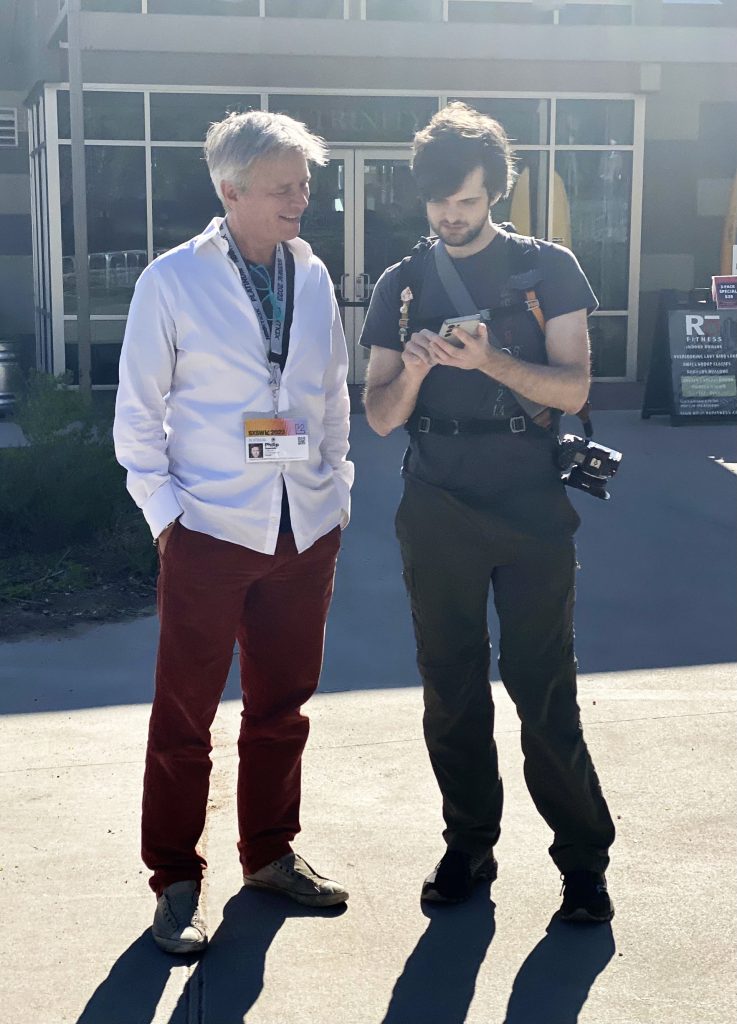SXSW, 2023 – The Future of the Internet
I’m writing this blog post from an American Airlines flight on my way back home from Austin, and it’s reminding me of my past days as a developer relations engineer at Microsoft, when conference travel was a bigger part of my job and I spoke at events more frequently than I do now. This year, I was on a panel about open innovation, and how we need to consider collaboration and ecosystem development when building new technology solutions for the future of the internet.
Read my interview with Politico about the future of the internet: https://www.politico.com/newsletters/digital-future-daily/2023/03/15/how-to-rebuild-the-internet-00087254
As a developer-turned-product-owner, the tension of building products and innovation is one that I’ve seen companies struggle to navigate. One of my fellow panelists and I disagreed over whether or not you can build products and innovate at the same time. I found it a bit ironic that he felt they were at odds with one another, because from my perspective, that was part of the whole point of the panel: to make the point that the way we currently think about product development is fundamentally broken.
Silicon Valley loves the phrase “move fast and break things”. But what happens when we’re breaking things that we don’t realize we’re impacting, or breaking things that people fundamentally rely on for their livelihood and well-being?
One of the most dangerous things that we can do is look only to the structures that those who came before us have set. I’ve seen this in the metaverse companies that try and fail to recreate social structures without consideration for the power dynamics that they are embedding into their communities. Moving fast and breaking things all the time eventually means that we are surrounded by the pieces of our world, with no guarantees that we’ve built something better.



In the field of economics, the concept of “externalities” refers to the side-effects of the decisions that are made in society. There are different types of externalities – they can be positive or negative, and they can be on either the consumption side (they happen when people buy or take an action) or the production side (they happen when we create something). Climate change is an example of a negative production externality – producing the goods and services that power our daily lives creates the effect of excess CO2 emissions. Vaccines are an example of a positive consumption externality – when people are vaccinated, their immunity benefits even those who are not able to be vaccinated directly.
In software development, the process of identifying externalities as part of our development life cycle is under-utilized. The concept of “disruption” – another Silicon Valley darling term – is considered. The market in high tech encourages breaking and disrupting the human experience to be a key component of their work. Who is picking up the pieces of those broken systems?
The market capitalization of the largest technology firms exceeds $3T USD, which is more than the GDP of most countries. These firms make decisions to hire employees for the sole purpose of keeping them away from contributing to their competition, hurting overall productivity of the economy in favor of driving wealth to shareholders. It’s time for something different.
Spatial computing is revolutionizing the way that we engage with information and one another.
While recent layoffs at Meta and Microsoft might suggest that “virtual reality is dead”, it is under the reduced public eye that these companies will continue to innovate in private, keeping their cards close to their chest as they continue to work on systems that are increasingly capable of tracking our most intimate thoughts and influencing our actions.
All of the decisions that we make about the software that we build have externalities attached to them. It’s up to us to determine whether it is still okay for us to be commoditized; our data sold to the highest bidder to sell us things that we don’t actually need. I am hopeful that we can – in light of the increased visibility that we have into the externalities of technology and software development – collectively choose to move more slowly, operate more locally, and create with more intention.
At the end of the day, humans still have agency over their decisions. Capital-holders can decide to fund ventures and initiatives that look at impact beyond profit; to create new funds and distribute their wealth in ways that helps our collective society. Regulators and legislators can take more powerful stances to fund innovation, break up large tech companies, and aggressively tax the obscene wealth that people hold. It’s idealistic, for sure, but we cannot ignore idealism altogether lest we lose sight of a better, more optimistic future.
So – onward towards those futures, we go.